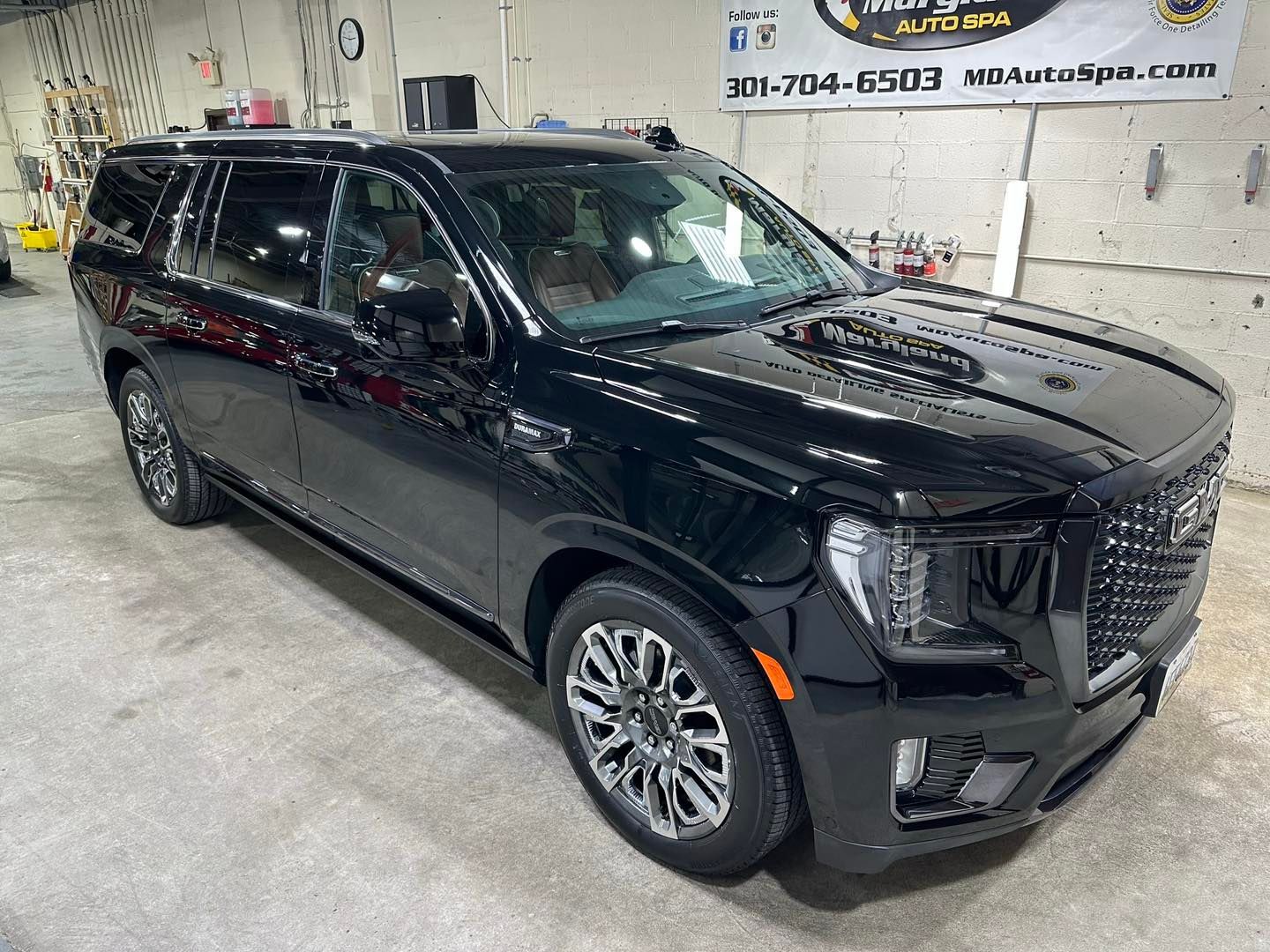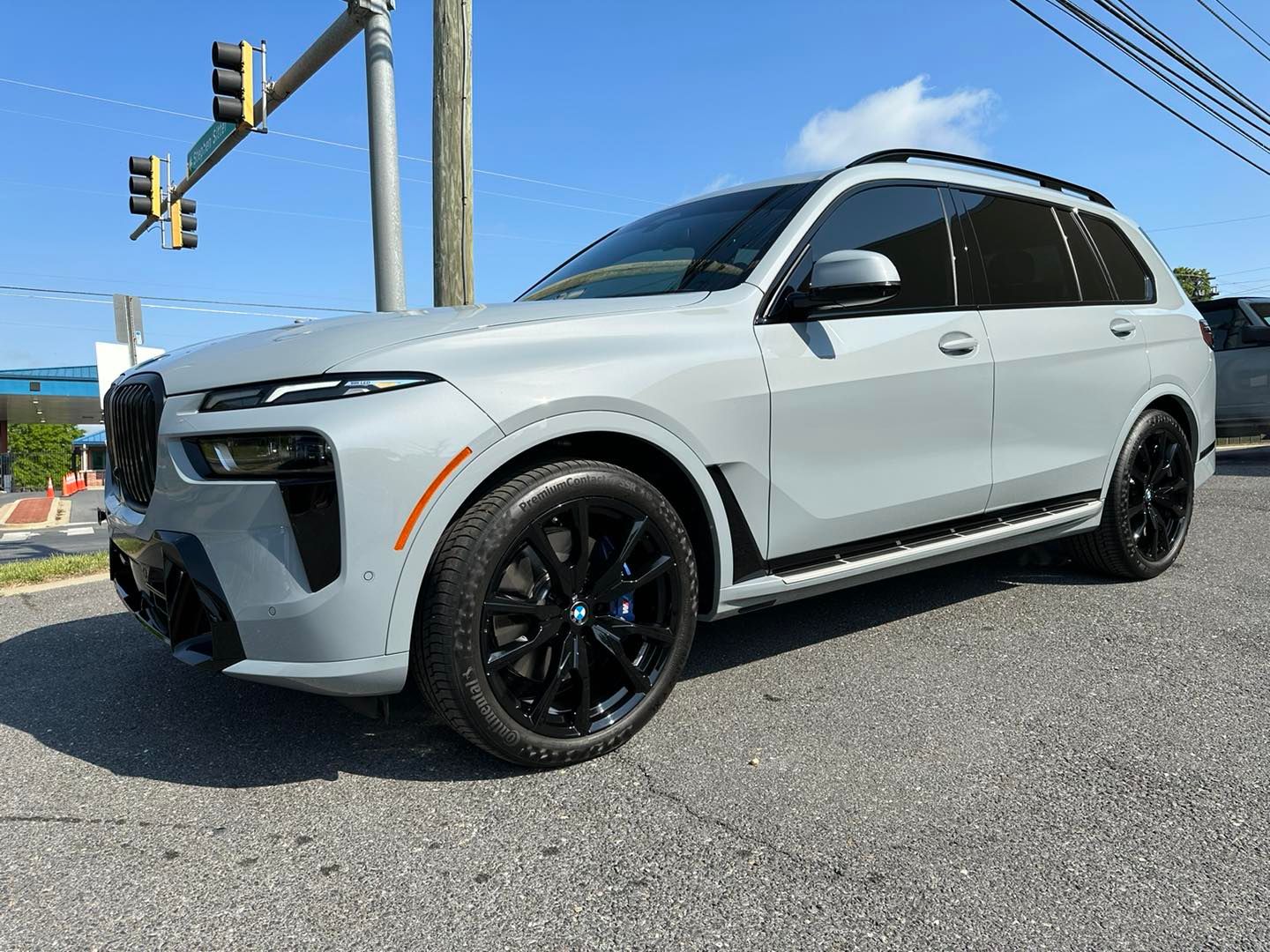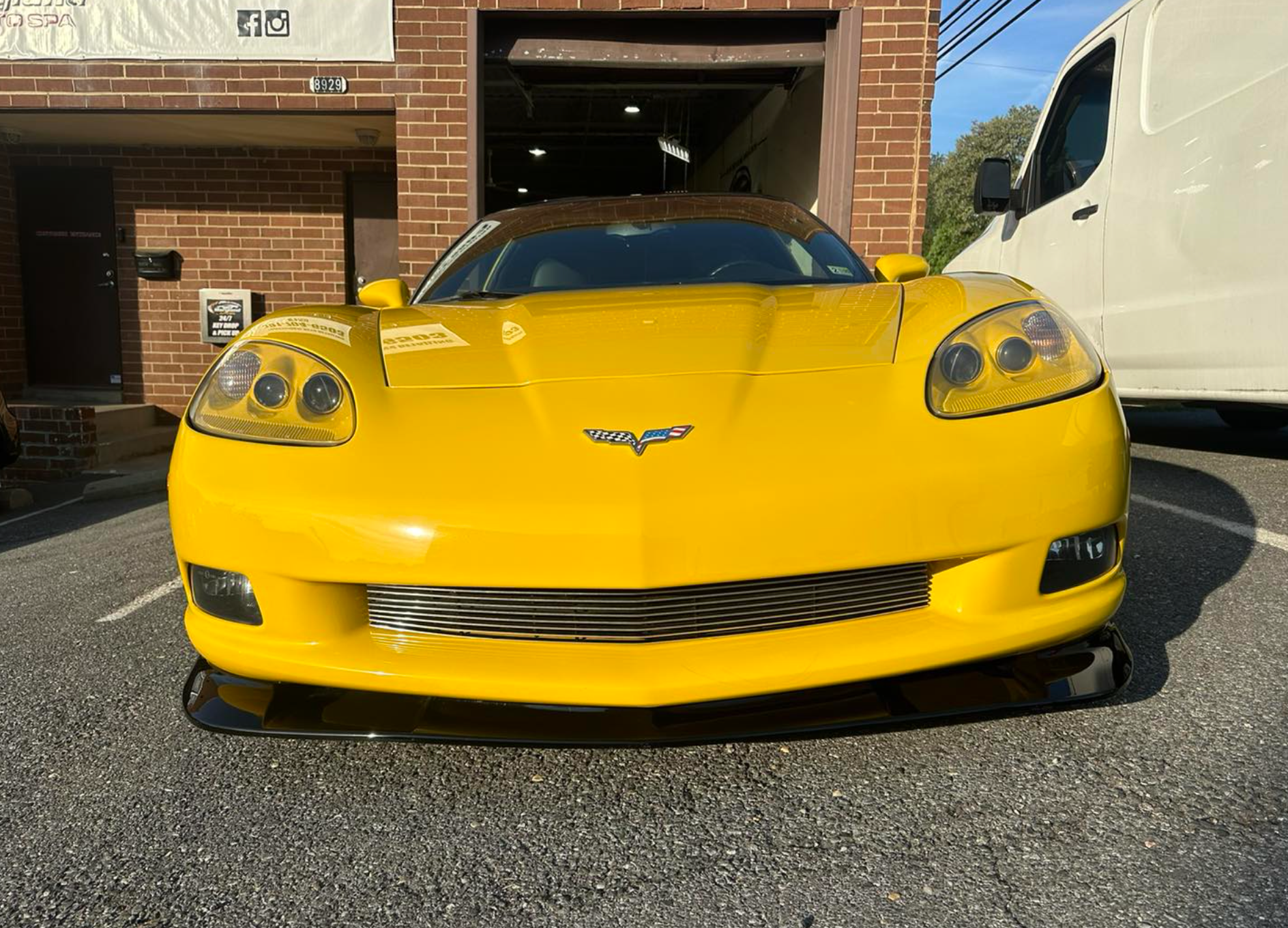Just like a symphony orchestra, where each instrument brings its own unique value, creating a harmonious musical score, the process of Paint correction operates in stages, each bringing out a different aspect of your car’s appearance. Understanding these stages is like learning the notes before playing the music—a critical step needed to appreciate the full beauty of a perfected vehicle's paint job. In this blog post, we'll unravel the stages of Paint Correction—because your beloved automobile deserves nothing less than a masterpiece finish!

Understanding Paint Correction
Paint correction is the process of restoring and rejuvenating a vehicle's paintwork to its original condition, or even better. This process involves using different methods and tools to remove any defects, scratches, swirls, water spots, and other imperfections in the paint surface. The main goal of paint correction is to restore the vehicle's paintwork to a factory finish that looks glossy, smooth, and flawless.
To understand paint correction, it's first important to understand how automotive paints are applied. Automotive paints are applied in layers: primer, base color coat, and clear coat. Each layer serves a specific purpose: the primer provides adhesion between the metal or plastic substrate and the color coat; the color coat gives the car its distinctive color; while the clear coat protects the color coat from UV rays, environmental contaminants, and mechanical damage.
Over time, minor scratches, swirls, and other damages can occur on the surface of the clear coat due to improper washing techniques or exposure to environmental elements like acid rain or bird droppings. Moreover, with age and exposure to sunlight, ultraviolet radiation breaks down polymers, causing fading on top surfaces. These defects significantly detract from a vehicle’s overall appearance.
Let's say you buy a used car; upon closer inspection of its exterior, you notice some small scratches or swirl marks on the hood. Paint correction allows those blemishes to be professionally removed. Thus not only increasing aesthetics but also adding value to your car investment.
The beauty of this transformative process is that it does not require repainting your vehicle, meaning minimal loss in topcoat thickness. The process significantly preserves the original parts of the car and results in a better finished product.
The Role of Sanding and Compounds
When it comes to paint correction, sanding and compounds play a crucial role in achieving a smooth surface, regardless of the degree of damage. These methods work effectively in instances where the scratches are more severe, but as always, professional painters advise against endless buffing as this may thin out your top coat of paint.
Compound polishing is the application of abrading agents that remove very little or some layers from the car’s surface. This step is initiated with finer grit polishes getting progressively finer, enabling optimum precision for each stage. Generally, an average car would require three polishing stages to ensure the removal of all defects, which works best when put under an industrial lighting panel providing chiaroscuro effects.
Sanding aims to cut away heavier blemishes by leveling down the defective part just enough to make it easier to compound polish. There are dedicated sandpapers that professionals use that correspond with specific abrasive levels (grits). Sanding also provides additional benefits like clearing out deep marks and smoothing rough areas completely.
Applying these techniques requires extreme precision and care; not using them properly could lead to further damage to your automobile. For this reason, experts often recommend having professionals handle your paint correction project due to their experience and added insurance coverage.
For instance, let’s say you have swirls caused by bad washing habits that caught the attention of a well-trained technician who has years of experience handling gloss deficiencies; such experts would recommend a compound stage, possibly followed by further polishing, giving you long-lasting protection against such defects occurring again.
- According to a nationwide survey conducted in 2022, paint correction services were sought after by approximately 38% of vehicle owners who valued maintaining their vehicle's appearance.
- A study published in The Journal of Automotive Engineering suggests that adequate paint correction can improve the gloss level of a vehicle's exterior by up to 50%.
- Based on a research survey from the same year, nearly 85% of auto spa users believed that professional paint correction added value to their vehicle when considering resale.
Scratch and Swirl Removal
Scratches and swirls are some of the most common paint defects that many car owners face. These blemishes can ruin the appearance of a car's otherwise shiny and pristine paint job, making it look dull and lackluster. Therefore, effective scratch and swirl removal is an essential part of any paint correction process.
Unfortunately, scratches and swirls are often caused by incorrect washing techniques or improper handling by inexperienced automotive detailers. Using abrasive materials, such as sponges or towels, can lead to minor scratches on the surface of the clear coat. The same applies to using the wrong type of cleaning solution or applying too much pressure during washing.
To demonstrate swirls in more detail, consider taking a close-up image of a hood under bright sunlight. If you see a faded pattern of concentric circles across the surface, this is likely due to excessive use of abrasive materials.
Removing scratches and swirls requires delicate work and attention to detail. Detailers use specialized tools such as polishers and compounds, which help remove shallow scratches effectively without damaging the underlying paintwork.
Compounds are typically made up of abrasive particles suspended in a lubricating agent. When applied to the surface of the car, they work to level out imperfections by removing thin layers from the clear coat until it becomes uniform.
However, when working with these abrasive substances, it's crucial to have a trained hand. Using them improperly can result in further damage to the basecoat layer. That's why it’s so important for professional detailing services to provide experienced technicians who know how to remove scratches and swirls without causing further damage.
Some people think that deep scratches cannot be fixed without having a panel repainted entirely. However, this is not always true, even for deeper damage. While some damage may indeed require more extensive work, many scratches and swirls can be removed through careful machine polishing.
Of course, the level of correction depends on the severity of the damage. For lighter blemishes, hand polishing with a fine-grit compound may suffice. But for deeper damage, a machine polisher is often necessary to achieve a flawless finish.
Now that we have looked at understanding paint correction and how these factors—sanding and compounds, scratch and swirl removal— play an essential role in achieving a flawless finish, It’s time to explore the different correction levels achievable and what defines each level.

Exploring Different Correction Levels
When it comes to paint correction, not all damages are created equal. As such, there need to be different correction levels of varying degrees to cater to specific needs. Below are some of the most common correction levels that professional detailers offer:
1. Swirl Mark Removal: This level focuses exclusively on removing swirl marks from car surfaces without leveling them down entirely. It usually requires one or two stages of polishing with the appropriate compounds.
2.
One-Step Paint Correction: This includes removing nearly 50% of surface-level defects such as swirls and scratches while maintaining most of the original clear coat depth. A single-stage polishing process is typically sufficient at this level.
3.
Two-Step Paint Correction: This level removes up to 85% of surface-level damage by relying on heavier cutting compounds for initial pass-throughs before going onto more refined stages of polishing.
4.
Multi-Step Paint Correction: Requiring multiple stages, this level of correction caters to vehicles with severe defects, oxidation, and deep scratches and marks. The process is more comprehensive than the other levels, involving varied degrees of compound cutting, medium or fine grit finishing polish passes, and sometimes using a jeweler's polish for additional clarity.
At Maryland Auto Spa, we understand that every car’s different needs require varying degrees of work. Our experienced technicians approach each paint correction job with care and precision and use only the best equipment and product solutions available.
Some people believe that attempting to correct minor defects in the paintwork without professional help can be done quickly with tools from their local store. However, this is not always the case. Using improper techniques can generate a costly outcome if things get more problematic than they thought.
Imagine trying to fix a scratch yourself by using coarse sandpaper instead of proper polishing compounds. If you're not careful enough with your technique, you could end up removing too much paint and having to spend even more money repainting or undergoing a more intensive correction job than you started with.
What Defines Each Level?
There are several factors that define different levels of paint correction. The most common ones include the severity of damage present on a car's body, the age and condition of the vehicle's paint, and the desired outcome. In many cases, what one person considers a perfect finish may not be enough for another.
Typically, there are three levels of paint correction: single-stage, multi-stage, and wet sanding. Understanding these stages will help you determine which level of correction is necessary for your car.
Single Stage Paint Correction
Single-stage paint correction is the most basic level of correction. It involves using a polishing machine with one pad and one compound to remove light scratches and swirls from a car's paintwork. This process can bring some shine back to the surface, but it will leave deeper defects untouched. Single-stage correction is best used as regular maintenance for a car's exterior to keep it looking good until more extensive work is necessary.
Multi-Stage Paint Correction
Multi-stage paint correction typically includes several compounding stages with progressively finer grit abrasives. Each stage removes deeper scratches and defects until the final compound gives a flawless finish that would look great if protected by Ceramic Pro or Modesta Glass Coatings. Multi-stage correction requires more time and effort than single-stage correction, but it results in a much-improved look for an older car or severely damaged newer models.
Wet Sanding
Wet sanding represents the most intensive level of paint correction. A technician uses abrasive paper soaked in water to remove severe scratches or imperfections. The process involves taking off layers of clear coat until all imperfections are removed from beneath. Wet sanding might require repainting in some areas, but it can restore even heavily damaged cars to their original finish when done correctly.
For example, let's say you own an older car that has never been exposed to regular professional detailing and has developed light swirls due to everyday use. Chances are that single-stage paint correction could improve its looks and restore the original shine with a one-step process.
On the other hand, a newer car might have more damage due to exposure to environmental factors, including bird droppings, acid rain, and gravel. A multi-stage correction would be necessary to remove deeper scratches and restore the car's original look.
However, some people will always desire the best possible finish. In such cases, the wet sanding method would be best suited, as it can remove all imperfections, even deep scratches, and leave your car looking brand new.
The Paint Correction Process
The paint correction workflow has several stages that each play an essential role in achieving the desired results. During paint correction, there’s simply no substitute for experience or precautionary measures. Any mistake could be costly and permanent.
To achieve a perfect finish on any vehicle, it requires expertise and attention to detail from start to finish. The following are steps taken in paint correction:
Preparing the Car for Treatment
Before any paint correction work can be done, it is crucial to prepare the car properly. This step entails thoroughly washing and cleaning the car as well as assessing the paintwork for any defects. Only then can the process of paint correction truly begin.
Firstly, the car's exterior must be washed and cleaned properly with a high-quality car shampoo and microfiber towels. Ensure that all dirt, grime, and other contaminants are removed from the surface of the paintwork before proceeding to assess it.
After cleaning, it is important to examine the paintwork closely. Look for swirls, scratches, oxidation, and other imperfections in the paint, and make a note of their location and severity. This will help when determining which products and techniques should be used throughout the correction process.
After identifying imperfections through inspection of the surface with 250+ light strength and also under specialty lighting, compound polishes are chosen accordingly based on their aggressiveness level. The specific polisher pads used will determine how rough or mild the cut will be.
To accurately assess the condition of the paintwork, it will need to be exposed by removing any dirt or contamination that may be hiding scratches or imperfections within the layers of clear coat. The use of proper lighting will illuminate any such defects clearly.
Following this assessment process, masking tape should be used on delicate areas such as emblems, plastic trim, or moldings, sealing off any apertures leading into crevices or panels around door jams, etc., so they are not affected by polish, compound, or wax.
The cut is monitored closely using selected lighting methods to ensure a good balance between paint removal and surface finish quality. Working in sections, the polishers progressively work down through heavier abrasive compounds with tighter pads to more refined, precious resin-based polishes.
With so much time and effort invested in this process, it’s important to make sure that the right techniques are used. Aggressive methods can become alluring but may result in irreversible damages when dealing with certain paints - of which only an expertly trained technician is best suited to choose the right method through their experience and knowledge.
Only once all these steps have been followed precisely can you begin correcting damage to your vehicle's paint job.
Correcting Damages in Paint
The process of correcting paint damage includes multiple stages such as washing, decontaminating, polishing, and sealing. Every stage is crucial and must be done with precision and care.
Firstly, the car's exterior must be washed and dried properly to remove all dirt and grime that could interfere with the correction process. The next step involves decontamination of the surface area; it is essential to eliminate elements like tar, iron particles, etc. hidden within crevices in the paint job. If overlooked, they can lead to even bigger blemishes when worked on.
The next important step is polishing, which aims at removing finer scratches and swirls while smoothing out imperfections. There are various types of polishes available for different purposes depending on levels of abrasiveness needed, which range from aggressive level 1 cutting compounds tough on defects to mid-level 2 products for fine finish work or less severe deformities present, and then finally lower-cut level 3 polishes aimed more at gloss finishing work or rejuvenation.
Once the polishing is completed according to repair needs, it's time to seal up the surface area with wax or ceramic coatings. Sealants are used to protect newly polished surfaces from future damage or contamination.
Overall, every step is aimed at producing a high-quality finish by working on each defect systematically throughout this laborious but efficient process, ultimately providing vehicle owners with a brand new factory look for their automobile!
At Maryland Auto Spa, we follow this exact practice when repairing every vehicle brought in for corrections at our workshop. We believe that by following these steps thoroughly, our clients receive value for money when choosing us over other workshops that rush through detailing tasks without much thought, so their pocketbook grows and the customer loses.
Paint correction has a long list of advantages that make it seem worth the investment. Continue reading for some of these benefits.
Advantages of Undertaking Paint Correction
Paint correction is an important process that helps restore your car's paintwork to its original glory. It offers several advantages that not only enhance the look of your vehicle but also boost its overall value. In this section, we will explore some of the key benefits of undertaking paint correction to help you make an informed decision about whether it's right for your car.
Firstly, paint correction eliminates surface defects like swirl marks, scratches, and water spots. These defects are bound to appear over time due to exposure to harsh weather, contaminants like bird droppings and tree sap, and improper wash techniques. They can dull your car's appearance and make it look older than it really is. Paint correction uses different abrasive compounds and polishes to remove these blemishes and create a smooth, even finish that reflects light beautifully.
Secondly, paint correction adds a layer of protection to your car's paintwork. By removing the top layer of damaged clear coat, paint correction exposes the fresh layers below and seals them with a protective coating such as a ceramic coating or wax. A ceramic coating provides long-lasting protection against UV rays, acid rain, bird droppings, and other contaminants that can damage your car's paintwork over time.
Think of it like getting a haircut - by trimming off the dead ends and split-ends, you promote healthier hair growth and give your hair a natural shine that makes it look fuller and more vibrant. Similarly, by removing the damaged clear coat from your car's paintwork, you protect it from further damage and give it a glossy finish that makes it stand out on the road.
Some people may argue that investing in paint correction is not worth the cost or effort since their car still runs fine without it. However, they fail to realize that a car's appearance is just as important as its performance. A well-maintained car not only makes you feel proud to drive it but also attracts potential buyers if you ever decide to sell it. In fact, paint correction can increase the resale value of your car by thousands of dollars compared to an identical car with damaged paint.
Additionally, paint correction saves you time and money in the long run. By preventing further damage to your car's paintwork, you avoid costly repairs down the line that may involve repainting the entire vehicle. Moreover, regular paint correction ensures that your car looks great year-round and requires less frequent washing and waxing. This means less time spent on maintenance and more time enjoying the ride.
In conclusion, undertaking paint correction offers numerous advantages that enhance the look and value of your car. From removing surface defects to providing lasting protection and saving time and money on future repairs, paint correction is a worthwhile investment for any car owner who values their vehicle's appearance and longevity.
Contact Maryland Auto Spa today for a free estimate and see how we can help restore your car's paintwork to its original glory.




